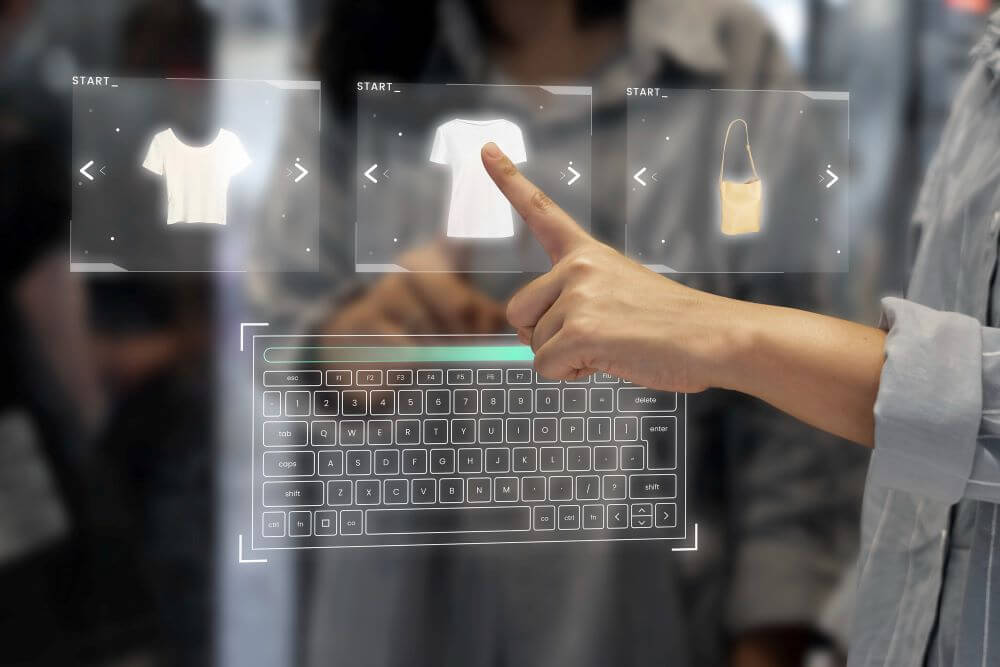The world of custom t-shirts has evolved significantly over the years, moving from traditional printing methods to cutting-edge technologies that allow for intricate, personalized designs. Custom t-shirts are no longer just a trend—they have become a form of self-expression, a business tool, and a marketing strategy for brands of all sizes. With the advent of new printing technologies, the entire process of designing and creating t-shirts has become faster, more affordable, and more creative.
In this article, we will explore how technology is revolutionizing t-shirt customization, empowering designers, businesses, and consumers alike.
A Look Back: Traditional T-Shirt Printing Methods
Before we dive into the exciting new technologies, it’s important to understand the traditional methods that laid the foundation for custom t-shirt printing. For decades, screen printing was the go-to method for creating custom t-shirts. Screen printing involves transferring ink onto fabric through a mesh screen, with each color requiring a separate screen and layer of ink. While it’s an effective method, it has its limitations—especially for complex designs or small orders. The process can be slow and expensive, making it less practical for short runs or highly detailed artwork.
Transfer printing was another method used to transfer designs onto t-shirts. This method involves printing a design onto a special transfer paper, which is then applied to fabric using heat. While it was a faster and cheaper alternative to screen printing, it didn’t offer the same quality or durability. The design often faded over time, and it wasn’t as versatile as newer methods, especially for fabrics beyond cotton.
The Rise of Digital Printing: A Game Changer for Custom T-Shirt Design
The advent of digital printing marked a turning point in the world of t-shirt customization. Unlike traditional methods, digital printing involves using inkjet printers to print full-color designs directly onto fabric. This allows for greater design freedom, making it possible to print highly detailed and vibrant images without the need for separate screens or complicated setup processes.
One of the most significant advances in digital printing is Direct-to-Garment (DTG) printing. DTG printing uses specialized inkjet technology to print directly onto the fabric of the t-shirt, allowing for intricate, high-quality designs. It’s especially effective for small orders or one-off custom designs, as there is no need for setup or large minimum quantities. The results are durable and vibrant, with the ability to print on both light and dark fabrics.
However, DTG printing is not without its limitations. While it works well for cotton fabrics, it is less effective on synthetic materials like polyester. This led to the rise of other printing technologies, such as sublimation printing, which works best on synthetic fabrics and allows for vibrant all-over prints. Sublimation printing uses heat to transfer dye into the fabric, creating designs that are both vivid and long-lasting. However, it’s limited to light-colored fabrics, primarily polyester, and doesn’t work on cotton.
DTF Transfer Printing: A Versatile Solution
In recent years, DTF transfer printing has emerged as a revolutionary technology in the custom t-shirt printing world. This method uses a unique transfer film process to print designs onto a special film, which is then transferred onto fabric using heat. DTF transfer printing offers a versatile solution for printing on a wide variety of fabrics, including cotton, polyester, and blends, making it more adaptable than other methods like DTG and sublimation.
The major benefit of DTF transfer printing is its ability to print on both light and dark fabrics, offering greater flexibility than traditional sublimation. It also delivers durable, soft-to-the-touch prints that maintain their vibrant colors even after multiple washes. The ability to print on a variety of fabric types and colors makes DTF transfer printing a great choice for businesses and individuals who want to produce high-quality custom t-shirts with minimal effort.
Additionally, DTF transfer printing has a relatively low setup cost compared to screen printing, making it a cost-effective solution for small to medium-sized runs. The process is also faster than traditional methods, allowing for quick turnaround times and the ability to produce orders on-demand.
AI and Automation in T-Shirt Design: Enhancing Customization
As technology continues to advance, artificial intelligence (AI) and automation are making their mark on the t-shirt printing industry. AI-powered design tools are helping both professional designers and casual creators develop custom t-shirt designs with ease. These tools can recommend color palettes, suggest design layouts, and even create custom graphics based on user input. By automating aspects of the design process, AI tools allow for faster, more efficient creation of unique t-shirt designs, even for people without graphic design experience.
Automated printing systems are also streamlining the production process. These systems use robots and automated machinery to apply designs to t-shirts, reducing human error and speeding up production. Automated systems not only improve consistency and quality but also allow for greater scalability, making them an ideal choice for large orders or businesses that need to produce t-shirts quickly and efficiently.
Sustainability in T-Shirt Customization: Eco-Friendly Technologies
As consumers become more environmentally conscious, the demand for sustainable products is on the rise. In response, many custom t-shirt printing companies are adopting more eco-friendly technologies and practices. For instance, water-based inks are increasingly being used in place of traditional plastisol inks, which contain harmful chemicals. Water-based inks are not only better for the environment but also result in softer prints that feel more natural on the fabric.
Moreover, advancements in printing technologies, such as DTG and DTF, are helping reduce waste. Unlike traditional screen printing, which requires the use of multiple screens and large amounts of ink, digital printing methods apply ink directly to the fabric, reducing the amount of waste and excess ink. In addition, these technologies are energy-efficient, helping to minimize the carbon footprint of the printing process.
Sustainable practices don’t stop at the printing process. Many t-shirt manufacturers are turning to organic cotton and recycled fabrics to create eco-friendly custom t-shirts. The combination of sustainable materials and innovative printing technologies is helping to create a more environmentally responsible custom t-shirt industry.
On-Demand T-Shirt Printing: Meeting the Demand for Personalization
The rise of print-on-demand (POD) services has made it easier than ever for consumers to create personalized t-shirts without the need for large upfront costs or inventory. Print-on-demand platforms allow users to upload their designs and have them printed on t-shirts as needed, eliminating the need for bulk production. This model has opened up opportunities for entrepreneurs, designers, and small businesses to create unique, custom apparel without the risks associated with traditional manufacturing.
On-demand printing also allows for hyper-personalization, where customers can create truly one-of-a-kind designs tailored to their preferences. Whether it’s for a family reunion, a corporate event, or a fashion statement, print-on-demand services enable individuals to design and create their own t-shirts with ease.
The Future of T-Shirt Customization: What’s Next?
The future of t-shirt customization is bright, with new technologies continuing to emerge. Augmented reality (AR) is poised to play a role in how we interact with custom t-shirts, allowing customers to virtually try on designs before making a purchase. AR could also enable consumers to visualize how different colors, graphics, and styles would look on them, enhancing the online shopping experience.
In addition, the rise of wearable technology and smart fabrics could open up new possibilities for t-shirt designs that interact with the wearer’s environment or devices. Imagine a t-shirt that changes color based on temperature, or one that syncs with your smartphone to display notifications. These innovations have the potential to take t-shirt customization to the next level, merging fashion with technology.
Conclusion
Technology has completely transformed the way we think about t-shirt customization. From the versatility of DTF transfer printing to the speed and efficiency of AI-powered design tools, the possibilities for custom t-shirts are endless. As sustainability becomes increasingly important, eco-friendly technologies and materials are helping to make the custom t-shirt industry more responsible. Whether you’re a business looking to offer unique, personalized products or an individual wanting to express your creativity, modern printing technologies provide the tools to bring your vision to life. The future of t-shirt customization is bright, and technology will continue to drive innovation in this exciting industry.






